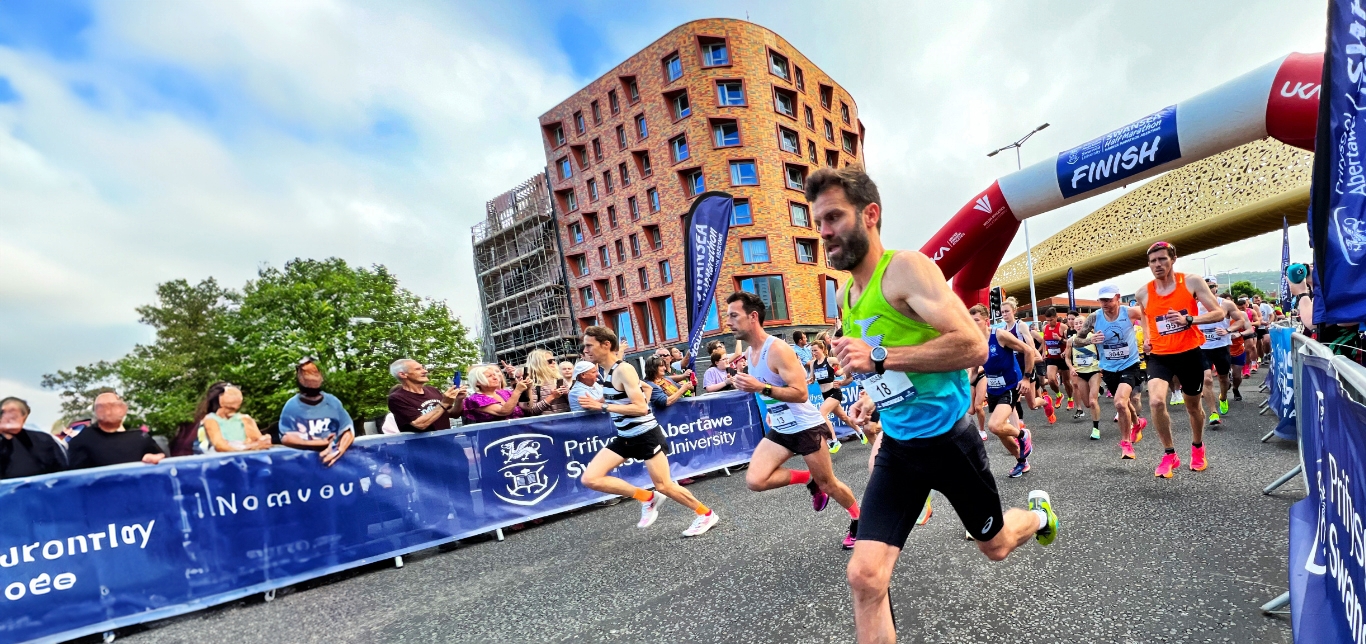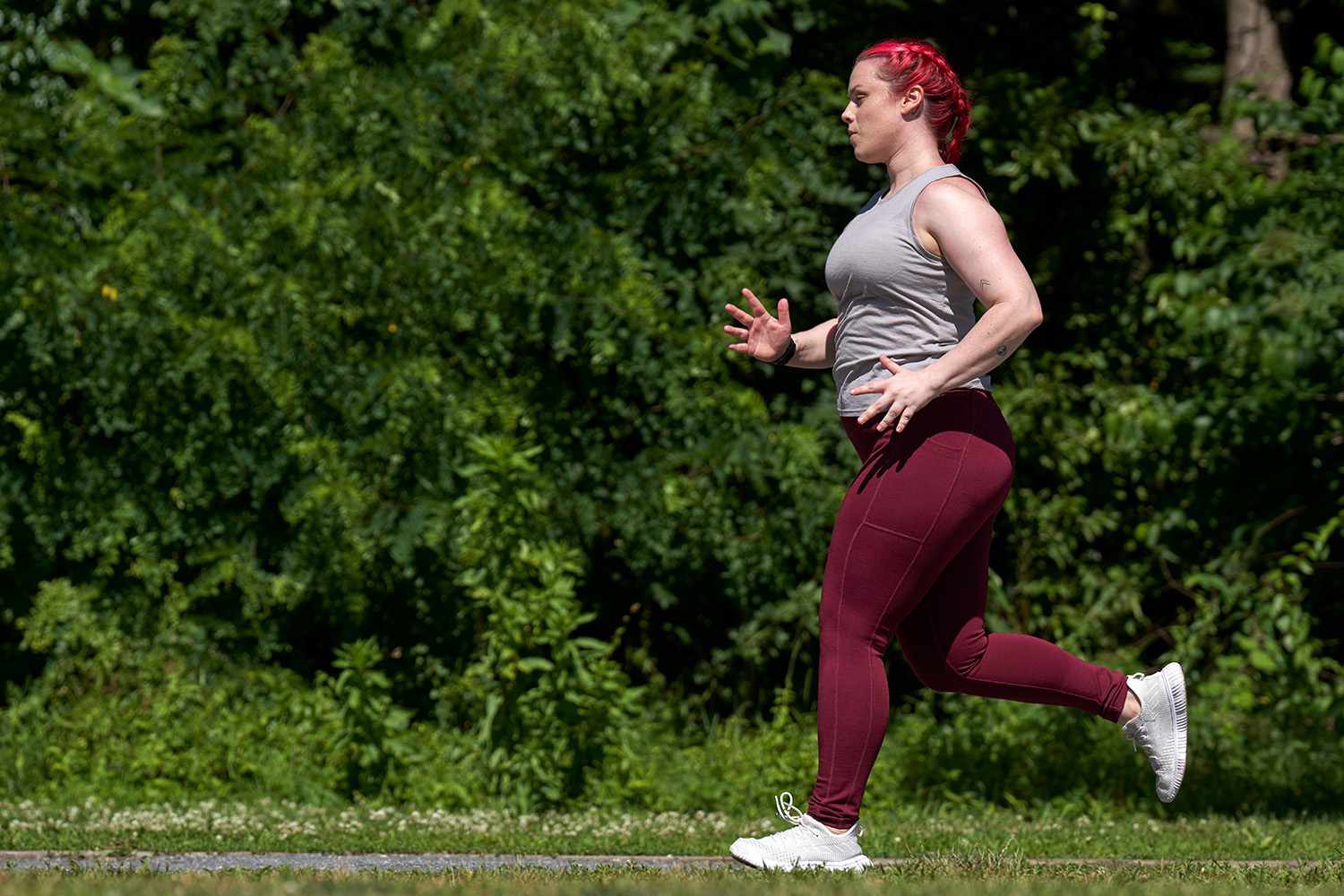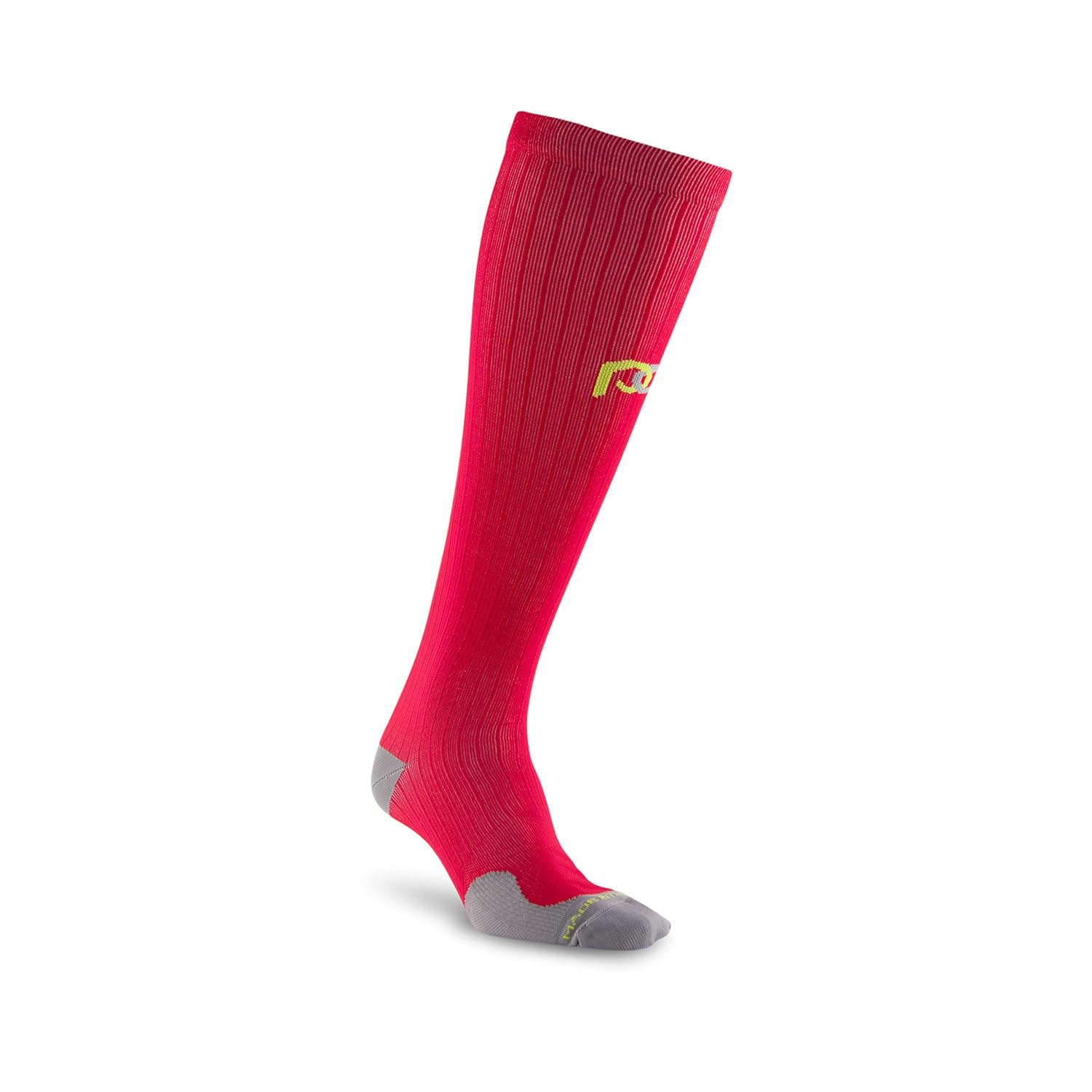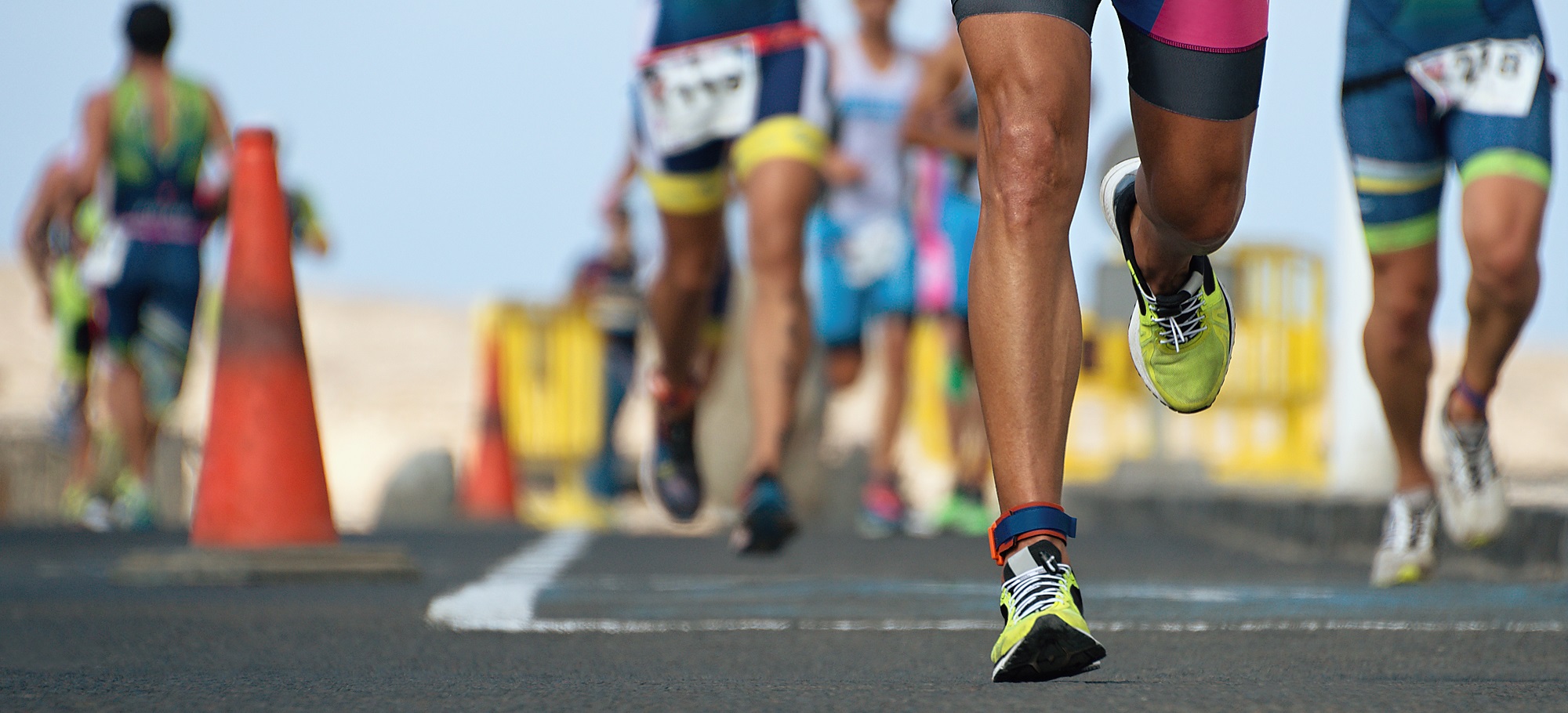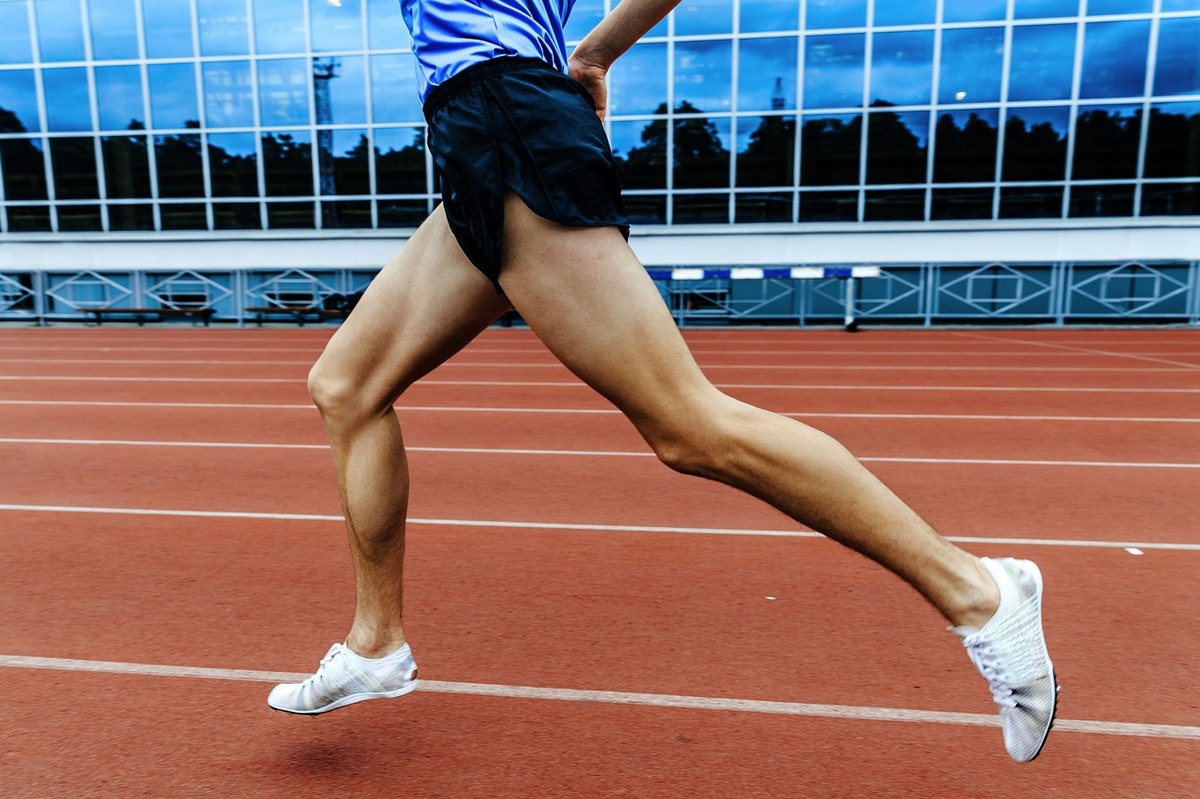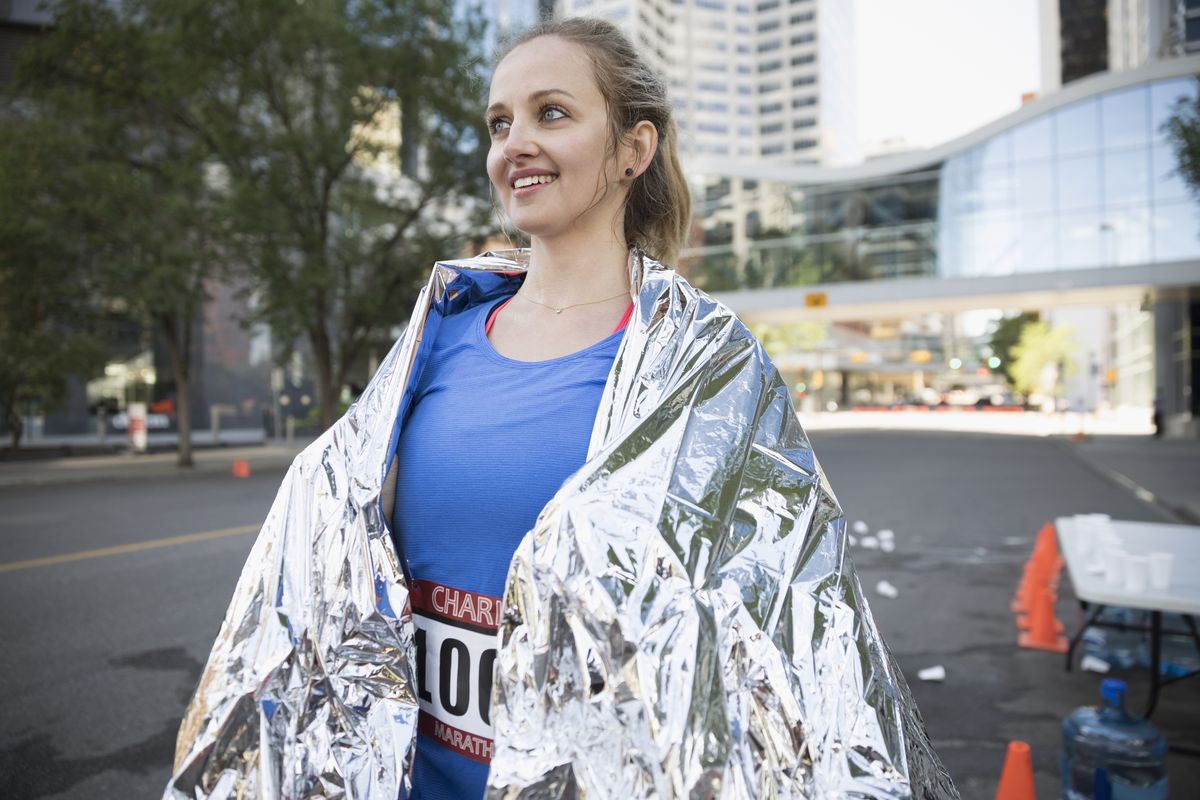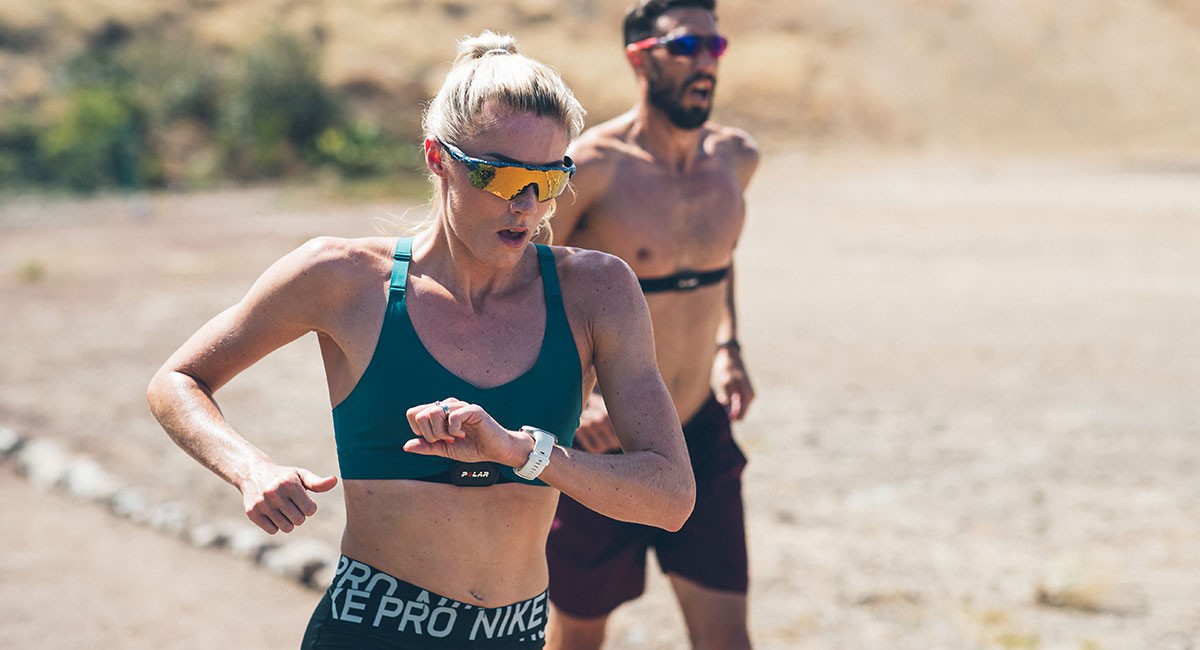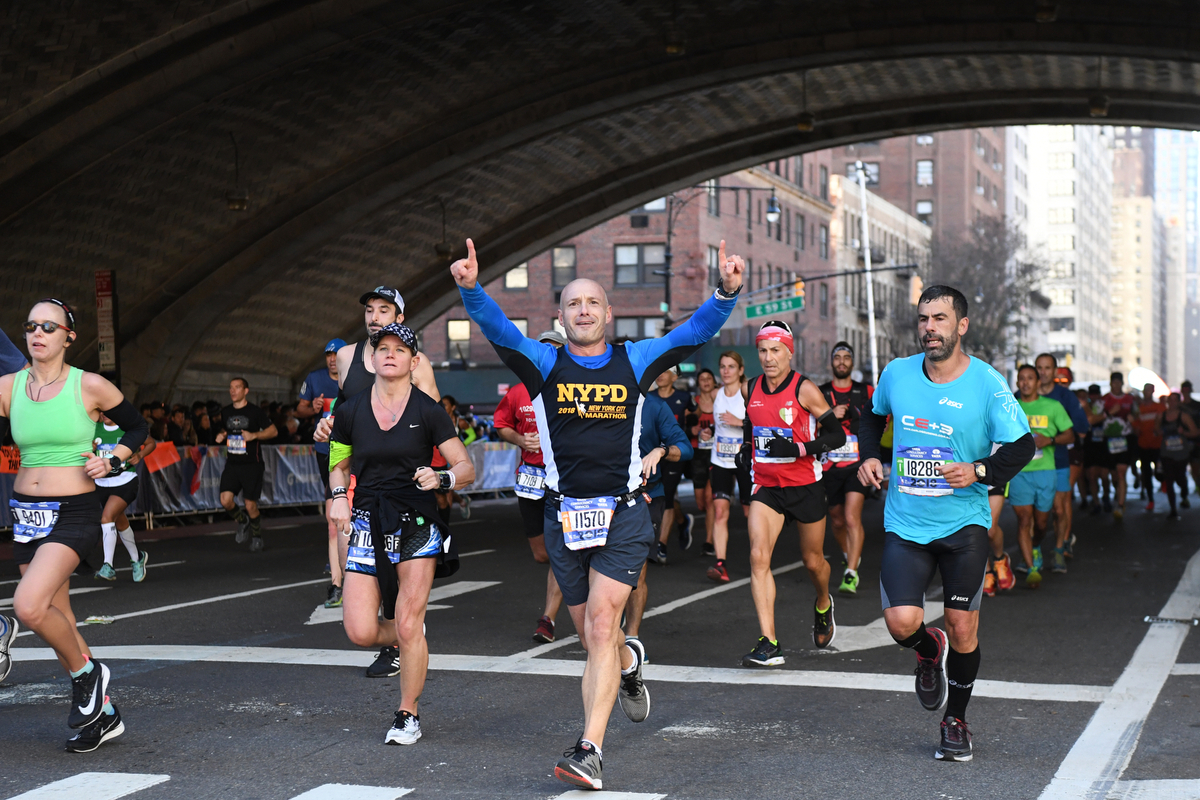Home>Misc>Featured>Where Should I Feel Sore After Long Distance Running
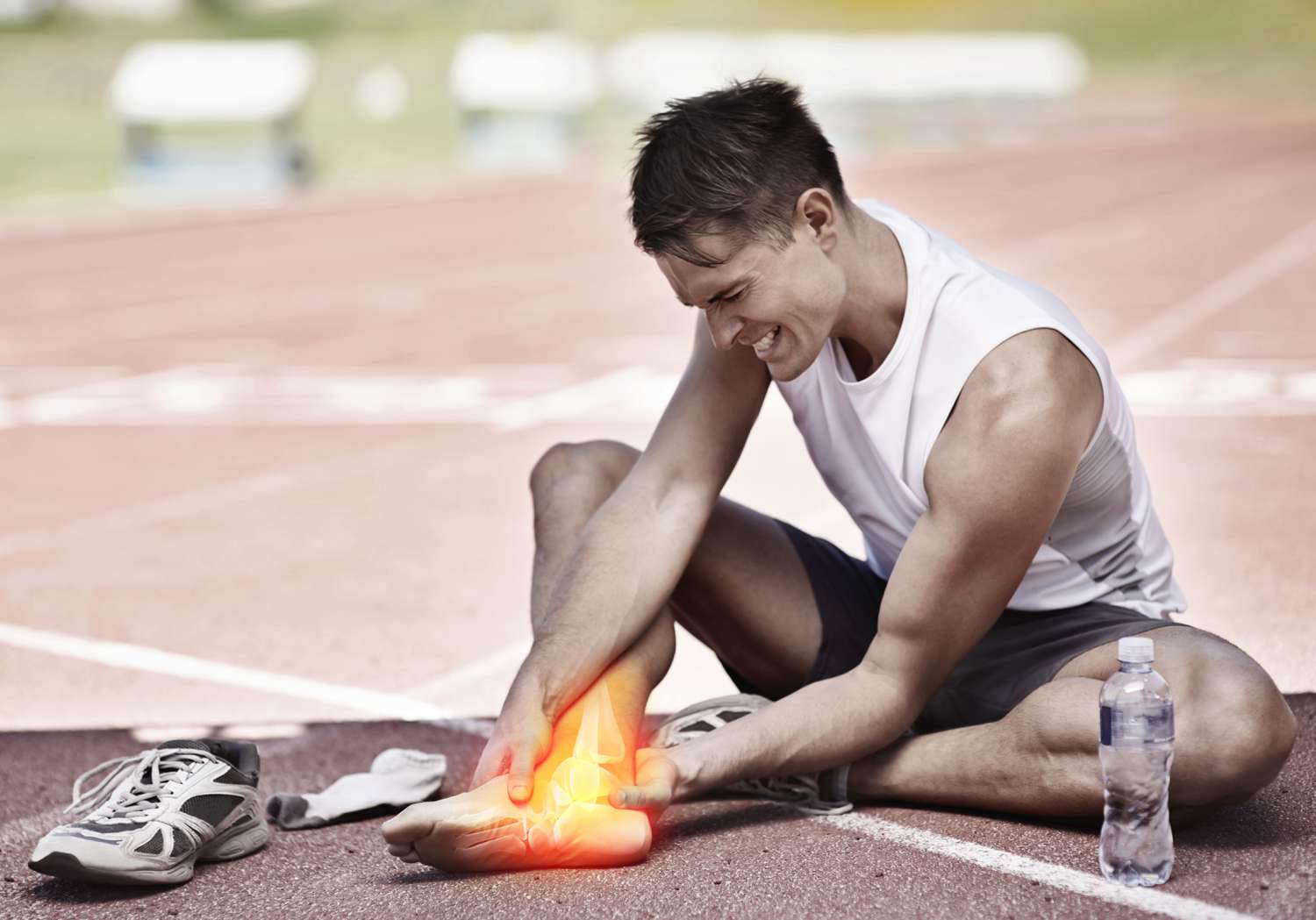

Featured
Where Should I Feel Sore After Long Distance Running
Modified: March 1, 2024
Discover where you should feel sore after long distance running and how to recover. Featured tips for runners seeking post-run relief.
Introduction
Welcome to the world of long distance running! If you’re new to the sport or are considering taking it up, you may be wondering what to expect after a long run. One common question that arises is, “Where should I feel sore after long distance running?”
Feeling sore after a long distance run is actually quite normal and can even be considered a sign of progress. It indicates that your muscles have been challenged and are adapting to the demands of running. While soreness can be uncomfortable, it is often a positive reminder that you’ve pushed your body and achieved a new level of fitness.
In this article, we will explore the importance of feeling sore after long distance running, the muscles most commonly used during these runs, and the areas where you are most likely to feel soreness. We will also discuss how to determine the cause of soreness and provide tips for effectively managing it.
So, if you’re ready to delve into the fascinating world of post-run soreness, let’s get started!
Importance of Feeling Sore After Long Distance Running
Feeling sore after a long distance run is not only common but also an important indicator of progress and improvement. While initially, it may seem unpleasant and uncomfortable, it signifies that your muscles are adapting to the demands placed on them during the run. Let’s explore the reasons why feeling sore after long distance running is beneficial.
1. Muscle Growth and Strength: When you run long distances, you subject your muscles to continuous and repetitive contractions. This causes microscopic damage to the muscle fibers. In response, your body initiates a repair and rebuilding process, which leads to muscle growth and improved strength. The soreness you feel is a result of this repair process, signaling that your muscles are getting stronger.
2. Adaptation and Endurance: Endurance is a crucial component of long distance running. By consistently challenging your muscles and causing them to feel sore, you are encouraging them to adapt and become more efficient. This adaptation results in increased endurance, allowing you to run longer distances with greater ease over time.
3. Mental Resilience: Long distance running is not just physically grueling but also mentally demanding. The soreness you experience after a run helps build mental resilience and discipline. By pushing through the discomfort and continuing to train, your mind becomes stronger, enabling you to persevere through challenges both on and off the running track.
4. Injury Prevention: Soreness after a long run can also serve as a protective mechanism. When you push your body to its limits, it exposes weak areas or imbalances in your muscles. The soreness acts as a warning sign, alerting you to potential areas that need attention and strengthening, which can help prevent injuries in the future.
5. Feedback and Progress Monitoring: The soreness you experience after a long distance run provides valuable feedback about the effectiveness of your training. If you consistently experience soreness in the same areas, it may indicate muscle imbalances or overuse. This information can help you modify your training program, allowing for more targeted and balanced workouts.
Overall, feeling sore after long distance running is not something to be feared but rather embraced. It is a sign that your body is adapting, growing stronger, and becoming more resilient. So, the next time you wake up feeling a bit sore, remember that it is a testament to your hard work and dedication to the sport of long distance running.
Muscles Used in Long Distance Running
Long distance running is a full-body workout that engages multiple muscles to propel you forward and maintain a steady pace. While running primarily targets the muscles of the lower body, several other muscle groups also play a vital role in supporting your form and endurance. Let’s explore some of the key muscles involved in long distance running.
1. Quadriceps: The quadriceps, located in the front of the thigh, are one of the primary muscle groups used in running. They help extend the knee and provide the power to push off the ground with each stride. Strong quadriceps are essential for generating forward momentum and maintaining a steady pace during long distance runs.
2. Hamstrings: The hamstrings, located in the back of the thigh, work in conjunction with the quadriceps to propel you forward. They play a crucial role in knee flexion and hip extension, absorbing and generating force with every stride. Strong hamstrings contribute to efficient running form and reduce the risk of injury.
3. Glutes: The gluteal muscles, comprising the gluteus maximus, medius, and minimus, are the largest muscles in the body and provide power and stability during running. They play a significant role in hip extension, maintaining balance, and preventing excessive inward rotation of the knee. Strong glutes help maintain proper running mechanics and improve overall performance.
4. Calves: The calf muscles, including the gastrocnemius and soleus, are heavily engaged during the propulsion phase of running. They help push off the ground and provide the force needed for forward movement. Strengthening the calf muscles can enhance speed, endurance, and running efficiency.
5. Core Muscles: Although not directly involved in generating forward movement, the core muscles are vital for stability and maintaining proper running posture. The abdominals, obliques, and lower back muscles help stabilize the pelvis and spine, preventing excessive rotation and reducing the risk of injury. A strong core also improves breathing efficiency and overall running economy.
6. Upper Body Muscles: While the lower body does the majority of the work in running, the muscles of the upper body also play a supporting role. The arms and shoulders assist in maintaining balance, rhythm, and efficient arm swing. Proper arm movement helps conserve energy and optimize running mechanics.
Understanding the muscles used in long distance running can help in designing targeted strength and conditioning exercises to improve performance and prevent imbalances. It is important to incorporate strength training exercises that target these specific muscle groups to build strength, endurance, and stability for optimal long distance running.
Common Areas to Feel Sore After Long Distance Running
Long distance running puts significant stress on various muscle groups, leading to soreness in specific areas of the body. While individual experiences may vary, there are several common areas where runners often feel soreness after their runs. Understanding these areas can help you identify potential imbalances and focus on targeted recovery strategies. Let’s explore some of the most common areas to feel sore after long distance running.
1. Quadriceps (Front of Thigh): The quadriceps are heavily engaged during running, especially during the push-off phase. You may feel soreness in the front of your thighs, specifically in the muscles above your knees. This soreness often indicates that your quadriceps have been working hard to propel you forward.
2. Hamstrings (Back of Thigh): The hamstrings play a crucial role in leg extension and help generate power with each stride. As a result, many runners experience soreness in the back of their thighs after long distance runs. Stretching and foam rolling can help alleviate hamstring tightness and soreness.
3. Calves: The calf muscles, comprising the gastrocnemius and soleus, are actively involved in pushing off the ground during running. Soreness in the calves is quite common, especially for runners who frequently encounter uphill sections or engage in high-intensity workouts. Gentle stretching and massage can help relieve calf soreness.
4. Glutes: The gluteal muscles, particularly the gluteus maximus, play a significant role in hip extension and stabilization. Soreness in the glutes after long distance running may indicate that these muscles have been engaged to maintain proper running form and generate power. Strengthening exercises, such as squats and lunges, can help alleviate glute soreness and improve overall running performance.
5. Lower Back: The repetitive impact and constant engagement of the core muscles during long distance running can lead to lower back soreness. Weak core muscles or improper running form can further contribute to discomfort in this area. Incorporating exercises that target the lower back, such as back extensions, can help strengthen these muscles and reduce soreness.
6. IT Band (Iliotibial Band): The IT band is a thick band of connective tissue that runs along the outside of the thigh. It connects the hip to the knee and assists in stabilizing the leg during running. IT band soreness or tightness is a common complaint among long distance runners, often felt on the outside of the knee or along the outer thigh. Stretching, foam rolling, and incorporating exercises to strengthen the hip abductor muscles can help alleviate IT band discomfort.
Remember, post-run soreness is a normal part of the training process. However, if the soreness persists for an extended period or is accompanied by severe pain or swelling, it is important to consult with a healthcare professional to rule out any potential injuries.
Determining the Cause of Soreness
Feeling sore after long distance running is expected, but it’s important to determine the underlying cause of the soreness to address it effectively. Understanding the cause can help you make the necessary adjustments to your training routine and prevent further discomfort. Here are some factors to consider when determining the cause of your soreness:
1. Training Intensity: One common cause of post-run soreness is training intensity. If you recently increased the intensity or duration of your runs, it’s likely that your muscles are experiencing some degree of fatigue and soreness. Gradually increasing your training volume and intensity can help minimize soreness.
2. Running Form: Poor running form can lead to imbalances and excessive strain on certain muscles, resulting in localized soreness. Pay attention to your alignment, stride length, and foot strike pattern. Making adjustments and seeking guidance from a running coach or physical therapist can help improve your form and reduce soreness.
3. Muscular Imbalances: Imbalances in strength between different muscle groups can contribute to soreness. For example, weak glutes or tight hip flexors can alter your running mechanics and place additional stress on certain muscles. Strengthening weak muscles and stretching tight muscles can help correct imbalances and alleviate soreness.
4. Footwear and Equipment: Running in worn-out or improper footwear can have a significant impact on your body’s biomechanics and contribute to muscle soreness. Make sure you have well-fitting shoes that provide adequate support and cushioning. Additionally, using appropriate equipment such as compression socks or foam rollers can aid in recovery and reduce soreness.
5. Recovery Strategies: Insufficient recovery or inadequate post-run practices can prolong soreness. Properly cooling down after a run, including light stretching and foam rolling, can help prevent muscle stiffness and soreness. Additionally, incorporating rest days into your training schedule and prioritizing activities that promote recovery, such as proper hydration and nutrition, can minimize post-run soreness.
6. Underlying Injuries: While soreness is a natural part of the training process, excessive or persistent soreness may indicate an underlying injury. If the soreness is accompanied by sharp or intense pain, swelling, or limited range of motion, it is important to consult with a healthcare professional. They can provide a thorough evaluation and guide you in proper rehabilitation.
By carefully considering these factors, you can determine the cause of your soreness and take appropriate steps to address it. Remember, listen to your body and make adjustments as needed to ensure a safe and enjoyable running experience.
Tips for Managing Soreness After Long Distance Running
Dealing with soreness after long distance running is a common part of the training process. While it may be uncomfortable, there are several strategies you can implement to manage and alleviate soreness effectively. Here are some helpful tips:
1. Gentle Stretching: Engage in gentle stretching exercises to target the muscles that are experiencing soreness. Focus on static stretches and hold each stretch for 20-30 seconds. Stretching helps improve flexibility, reduce muscle tension, and promote blood flow to aid in recovery.
2. Foam Rolling: Incorporate foam rolling into your post-run routine. Foam rolling helps release muscle knots and tightness, improving circulation and reducing soreness. Roll slowly over the affected muscles, applying gentle pressure, and spend extra time on areas of particular soreness.
3. Ice or Cold Therapy: Applying cold therapy to sore muscles can help reduce inflammation and alleviate discomfort. You can use an ice pack or even take an ice bath to provide relief. Just remember to wrap the ice pack in a towel to protect your skin from direct contact.
4. Epsom Salt Soak: Soaking in a bath with Epsom salt can help relax muscles and relieve soreness. The magnesium sulfate in Epsom salt is believed to have anti-inflammatory properties that can reduce inflammation and promote muscle recovery. Follow the instructions on the package for the recommended amount of Epsom salt to use.
5. Cross-Training: Engage in low-impact activities such as swimming, cycling, or yoga on your rest days. Cross-training helps improve blood flow, promotes active recovery, and provides a break from repetitive movements that can contribute to muscle soreness.
6. Proper Nutrition and Hydration: Fueling your body with the right nutrients and staying hydrated can aid in recovery. Consume a balanced diet that includes lean proteins, whole grains, and plenty of fruits and vegetables. Proper hydration helps flush out toxins and supports muscle function.
7. Gradual Progression: Avoid sudden increases in training volume or intensity, as they can overwhelm your muscles and lead to excessive soreness. Gradually increase your mileage and intensity over time to allow your muscles to adapt and minimize soreness.
8. Rest and Recovery: Adequate rest and recovery are essential for muscle repair and growth. Schedule regular rest days and prioritize quality sleep. Allow your body time to recover between intense training sessions to prevent overuse injuries and reduce soreness.
9. Professional Help: If soreness persists or becomes chronic, consider seeking advice from a healthcare professional or sports therapist. They can provide personalized guidance, assess your running form, and recommend specific exercises or treatments to alleviate soreness and prevent future issues.
Remember, managing soreness is a crucial aspect of long distance running. By incorporating these tips into your routine, you can effectively manage and minimize post-run soreness, allowing you to enjoy your training and reach your goals effectively.
When to Seek Medical Attention for Soreness After Long Distance Running
Feeling sore after long distance running is a common occurrence, but there may be instances when the soreness indicates a more serious underlying issue. It’s important to differentiate between normal post-run soreness and potential injuries that require medical attention. Here are some guidelines to help you determine when to seek medical attention for soreness:
1. Intense or Prolonged Pain: If you experience intense, sharp, or persistent pain that doesn’t subside after a few days, it may be a sign of an injury. Pain that impacts your daily activities, worsens with movement, or prevents you from running should be evaluated by a healthcare professional.
2. Swelling or Discoloration: Noticeable swelling, redness, or bruising around a specific area of soreness may indicate an injury, such as a strain or sprain. Seeking medical attention can help diagnose the severity of the injury and guide appropriate treatment.
3. Limited Range of Motion: If you experience limited range of motion in a joint or muscle group, it could be an indicator of a more serious issue. Inability to move a joint freely or pain that restricts your normal movement should be evaluated by a healthcare professional.
4. Sudden Changes in Running Mechanics: If you notice sudden changes in your running gait or form, such as favoring one side or experiencing instability, it could be a sign of an underlying problem. Seeking medical attention can help identify any biomechanical issues or muscle imbalances that need correction.
5. Numbness or Tingling: Feelings of numbness, tingling, or a “pins and needles” sensation during or after a run may indicate nerve involvement. This can be a sign of nerve compression or irritation and should be examined by a healthcare professional.
6. Recurring or Chronic Soreness: If you consistently experience soreness in the same area after every run, it may indicate an underlying chronic condition or overuse injury. Consulting a healthcare professional can help identify the root cause and develop a suitable treatment plan.
7. Previous History of Injuries: If you have a history of previous injuries or ongoing chronic conditions, it’s essential to be cautious and proactive in seeking medical attention for any new or worsening soreness. Prior injuries may make you more susceptible to developing certain conditions or re-injury.
Remember, it’s better to be safe than sorry when it comes to your health. If you’re unsure about the severity or cause of your post-run soreness, it’s always best to consult with a healthcare professional or sports medicine specialist. They can accurately diagnose any underlying issues and provide appropriate treatment and guidance to help you recover and prevent future injuries.
Conclusion
Feeling sore after long distance running is a natural and expected part of the training process. It indicates that your muscles are adapting and becoming stronger, leading to improved endurance and performance. By understanding the importance of post-run soreness, recognizing the muscles used in long distance running, and identifying common areas of soreness, you can better manage and prevent discomfort.
When determining the cause of soreness, consider factors such as training intensity, running form, muscular imbalances, footwear, and recovery strategies. By addressing these factors, you can effectively manage and alleviate post-run soreness, allowing for a more enjoyable and rewarding running experience.
However, it is crucial to recognize when soreness may indicate a more serious issue. If you experience intense or prolonged pain, swelling, limited range of motion, or other concerning symptoms, it’s important to seek medical attention. Consulting with a healthcare professional or sports medicine specialist can help diagnose and treat any underlying injuries or conditions, ensuring a safe and effective recovery.
Remember to listen to your body, gradually increase your training volume and intensity, incorporate rest and recovery into your routine, and prioritize proper nutrition and hydration. By taking care of your body and addressing any soreness or injuries promptly, you can continue to enjoy the many benefits of long distance running and achieve your goals.
